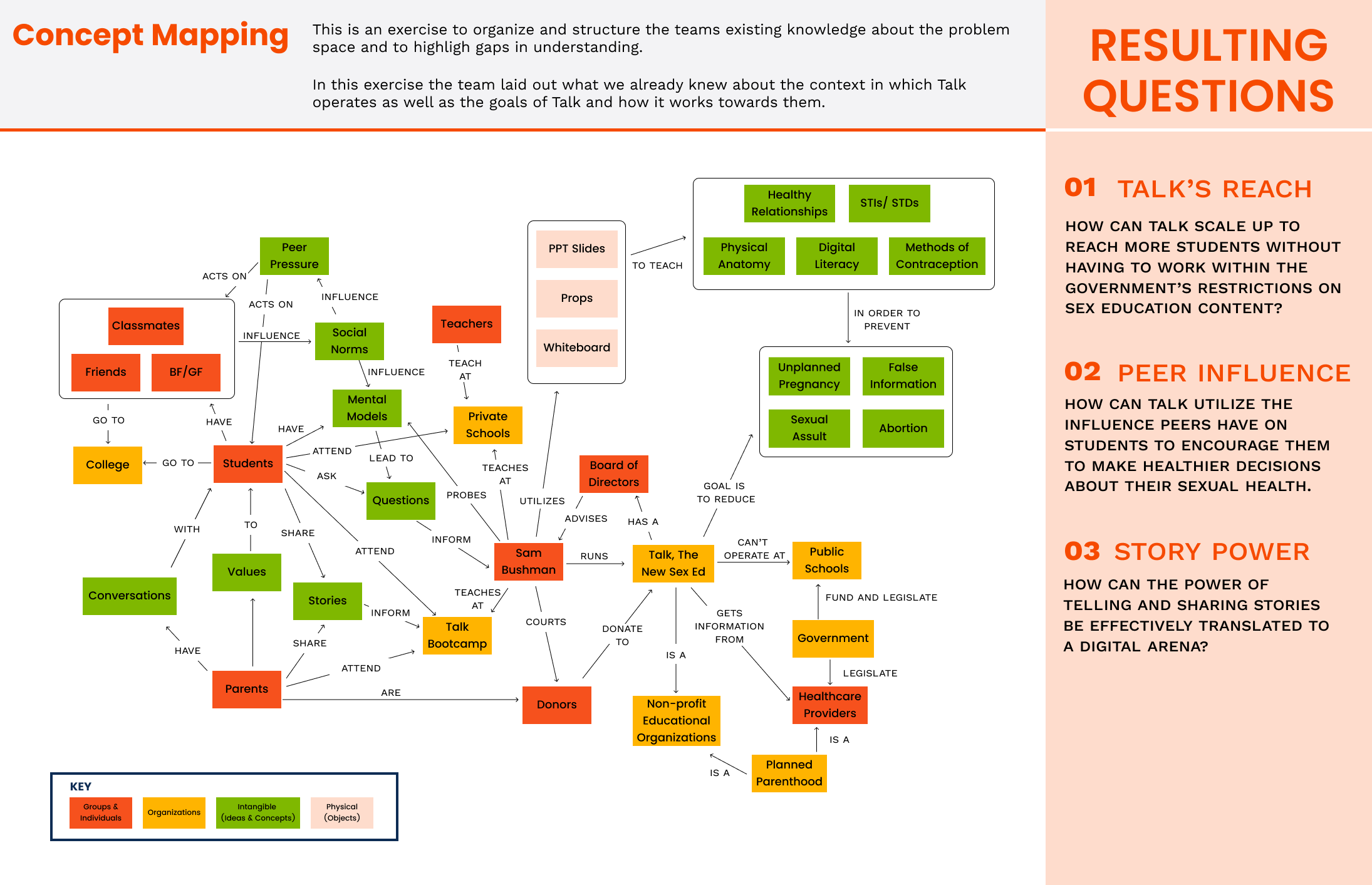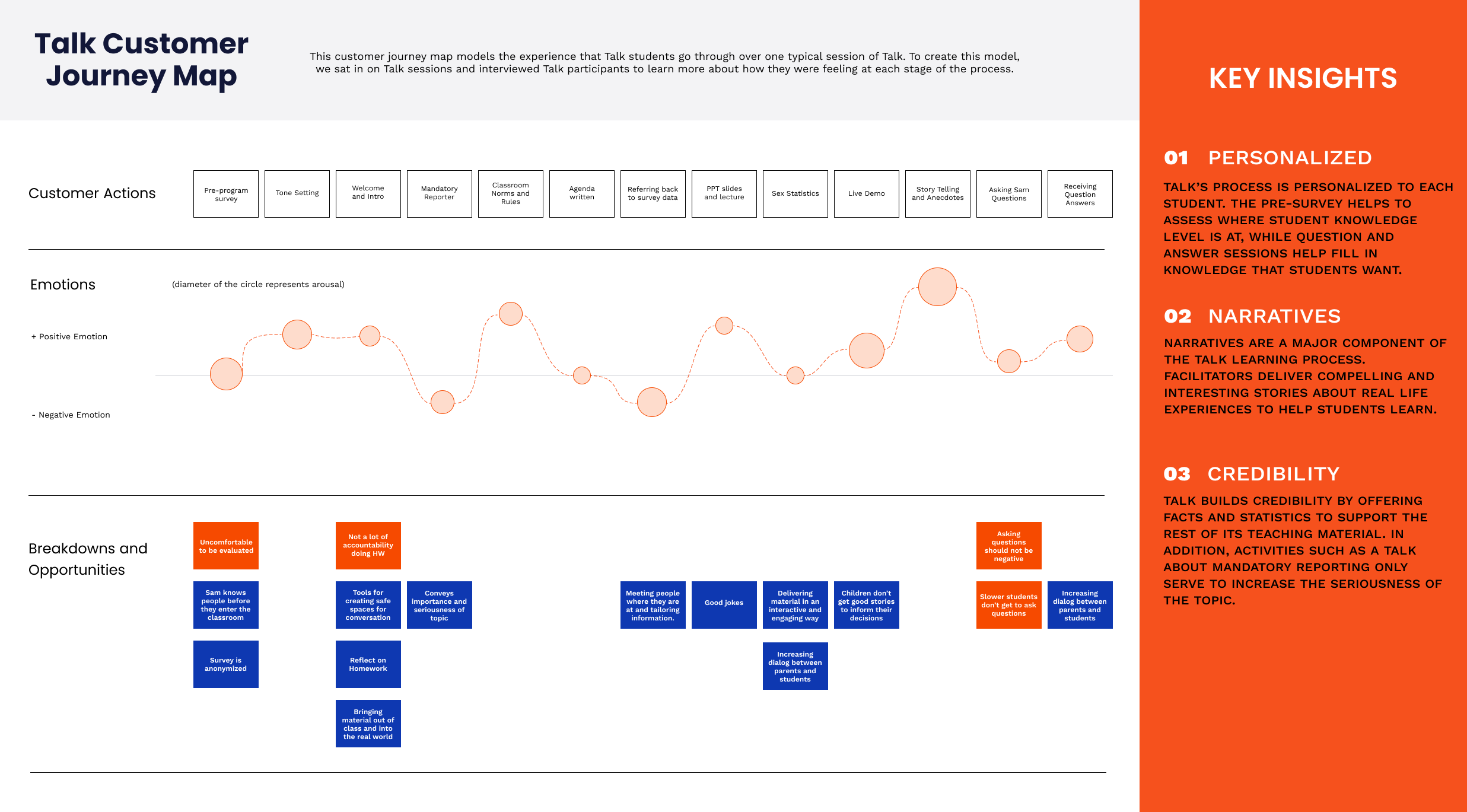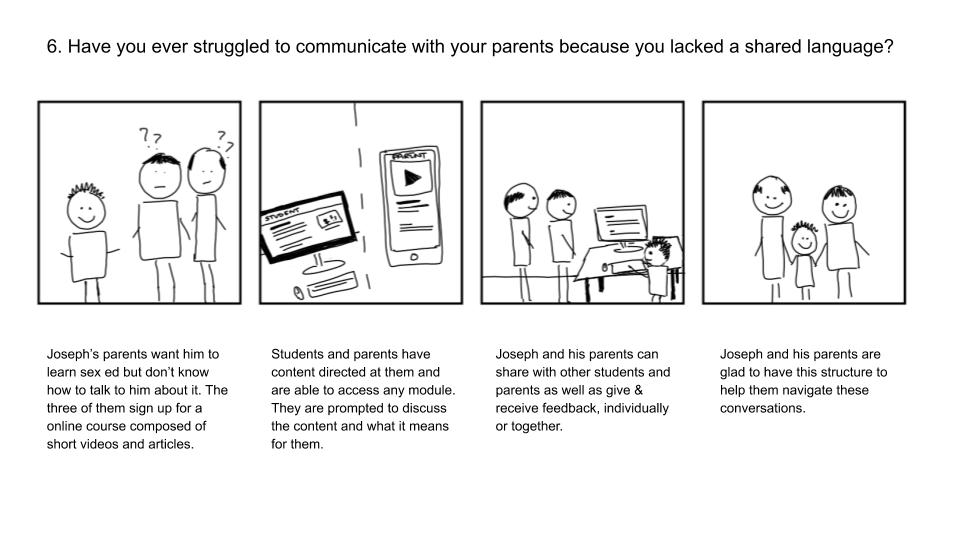We conducted secondary research to learn more about sex education in America, existing solutions in similar and analogous spaces, and also looked into educational technology.


The secondary research informed our interviewing. We talked to current participants of Talk, as well as students, parents, healthcare providers, and experts in related fields.
We conducted a reverse assumptions activity with our primary stakeholder to broaden our perspective on the problem space and kick off ideation.


We created storyboards and "speed-dated" radical concepts to test for boundaries that individuals have around the space of sex education and identify opportunities.
We conducted secondary research throughout the semester, reading online articles and academic papers. The first priority of our secondary research was to look into competitors. This informed us about possible solutions within the space, ranging from games, informational websites, videos, and even podcasts. In conjunction with this research, we also explored analogous domains by researching online learning platforms. Finally, we looked into social websites and how to create trust with technology, a priority for the Talk process.
After our initial secondary research was completed, we designed interview protocols for students and parents. The goals of the student interviews were to learn more about their sex education experience (Talk or Non-Talk), and hear about the nature of communication that they have with their parents. Our parent protocol focused on the values that parents wanted to teach to their children, as well as how parents communicate these values to their children. A common theme throughout our interviews was to gauge individuals comfort levels with the topic and their ability to effectively have conversations in the space.
Prior to creating and validating possible concepts and boundaries for solutions, we conducted a reverse assumptions activity with our primary stakeholder to reverse her assumptions about the space. The aim of this activity was to challenge our client to think outside of the box and see whether any assumptions would resonate with her.
We created storyboards of possible delivery mechanisms that could teach Talk content. The goal of these storyboards was not to validate real solutions, but rather to gauge boundaries that individuals have around sex education. Some storyboards included a conversational user interface to mediate parent to child communication, a Tinder sex education certification badge, and traditional online learning mechanisms. We then speed dated these storyboards with a variety of participants, including parents and students. This allowed us to identify not only boundaries but also positive opportunities for the team.
.png)
.png)